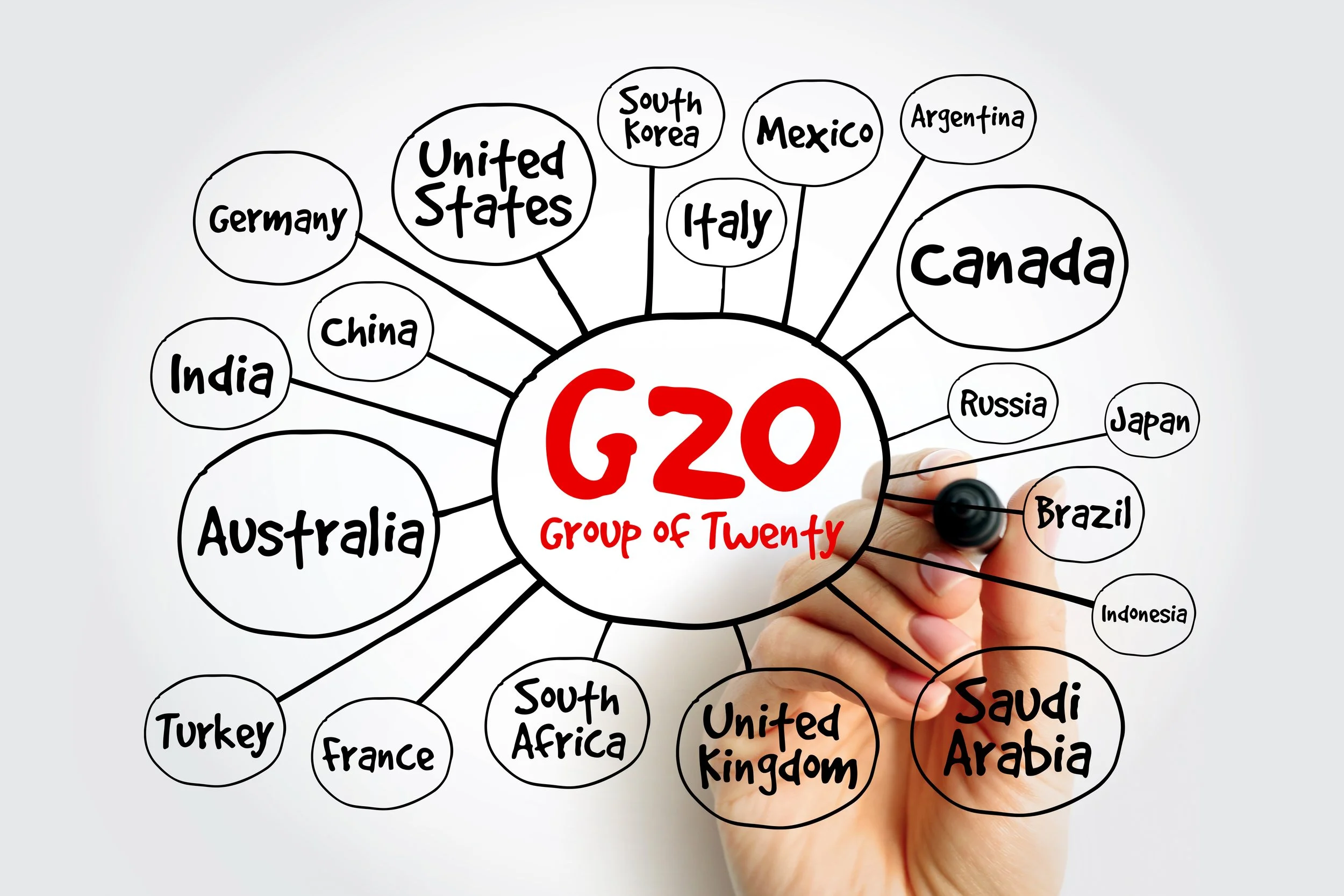How SMEs Can Thrive in a Fragile Economic Climate: Strategies for Agility and Resilience
Discover how SMEs can stay resilient in a fragile economy with strategies for agility, cash flow, digital adoption, and market diversification.
In today’s unpredictable economy, small and medium-sized enterprises are feeling the pressure. Markets shift quickly, supply chains fluctuate, and consumer behaviour changes almost overnight. But here’s the good news: SMEs aren’t powerless. With the right strategies, they can adapt faster, move smarter, and build resilience that outperforms larger competitors.
Think of today’s economy as a turbulent sea — unpredictable, choppy, and constantly moving. Big corporations function like massive ships that take time to turn. SMEs, however, are agile speedboats. When used wisely, this agility becomes a strategic advantage.
In this article, we unpack the strategies that help SMEs stay resilient, responsive, and competitive — even when the economic waters get rough.
1. Strengthen Cash Flow Discipline Before Crisis Hits
Cash flow is the heartbeat of any SME. And in a fragile climate, controlling cash effectively becomes your biggest survival tool. Research shows that 82% of small businesses fail because of poor cash flow management, making disciplined financial oversight non-negotiable.
Executives should focus on shorter receivable cycles, tighter expense controls, and proactive renegotiation of supplier terms. As Warren Buffett famously said, “Only when the tide goes out do you discover who’s been swimming naked.” Cash flow visibility keeps you prepared before the tide shifts.
Practical Tip: Introduce a rolling 13-week cash flow forecast to anticipate pressures early.
2. Build Agility Into Your Operating Model
Agility isn’t just a buzzword — it’s a competitive weapon. SMEs that streamline decision-making and reduce bureaucratic steps can pivot faster during market disruptions.
Studies from Gestaldt Research show that agile organisations outperform others in both profitability and operational resilience. For SMEs, this means empowering teams, shortening approval cycles, and shifting resources quickly when new opportunities emerge.
Practical Tip: Add weekly “decision sprints” where leaders align on fast-moving priorities.
3. Diversify Revenue Streams to Reduce Risk
Dependence on a single product, service, or customer segment is dangerous. Economic downturns often expose these vulnerabilities first. Diversification spreads risk and opens new market opportunities.
A Harvard Business Review analysis found that companies with diversified revenue models experience lower volatility and faster recovery during economic shocks.
Practical Tip: Identify at least one adjacent service or product that aligns with current capabilities and customer needs.
4. Invest in Digital Tools That Boost Efficiency
Digital adoption is now fundamental to SME growth. Whether it’s cloud solutions, e-commerce, automation, or AI-powered customer management, these tools reduce costs and improve operations.
Gestaldt Management Consultants report that SMEs that adopt digital tools grow up to 27% faster than those that don’t. And in tough times, efficiency becomes the biggest margin protector.
Practical Tip: Start with one workflow automation tool (billing, customer service, or inventory) to free up team capacity and reduce errors.
5. Strengthen Supplier and Customer Relationships
In fragile climates, relationships matter more than ever. Building trust with suppliers can lead to better terms, priority access during shortages, and shared problem-solving.
On the customer side, engagement and feedback cycles help SMEs adapt offerings faster. Richard Branson said it well: “Business opportunities are like buses — there's always another one coming, but only if you're ready.” Staying close to your customers ensures you never miss the next opportunity.
Practical Tip: Conduct quarterly relationship check-ins with your top five suppliers and customers.
6. Prioritise Employee Stability and Skills Development
Your people are your most important asset during disruption. SMEs with strong cultures outperform their peers in adaptability and retention during uncertainty.
According to Gestaldt Management Development Consultants, skills shortages remain one of the top barriers to SME growth, making upskilling essential. Investing in development doesn’t have to be expensive — micro-learning platforms and collaborative mentorship are cost-effective.
Practical Tip: Create a 3-month internal up-skilling plan focused on digital, customer, and operational skills.
7. Use Scenario Planning to Stay Ahead of Market Shifts
Scenario planning helps SMEs anticipate risks and act before competitors do. It allows leaders to prepare for shifts in consumer demand, supply chain disruptions, or regulatory changes.
Gartner notes that companies using structured scenarios are twice as effective at responding to rapid market changes.
Practical Tip: Build three simple scenarios — optimistic, moderate, and downside — and outline decisions for each.
Conclusion
The economic climate may be fragile, but SMEs have a unique advantage: agility. By strengthening cash discipline, diversifying revenue streams, adopting technology, and empowering people, small businesses can build resilience that turns uncertainty into opportunity.
Success in 2026 and beyond will go to SMEs that embrace flexibility, act decisively, and build organisational muscle for fast adaptation. With the right strategy in place, turbulent conditions can become a launchpad for growth.
Macroeconomic Outlook 2026–2027: What South African Executives Should Watch
South Africa’s macroeconomic outlook for 2026–2027 reveals volatility and opportunity. Here’s what executives must watch to stay competitive and resilient.
As South Africa approaches 2026, leaders face a global environment shaped by slowing growth, shifting trade dynamics, persistent inflation pressures, and increased geopolitical volatility. For executives, understanding the macroeconomic forces shaping the next two years is essential to making informed decisions on investment, risk management, talent, and long-term competitiveness.
This article outlines the key macroeconomic indicators and global trends South African business leaders should monitor — and how those insights can inform strategic planning in 2026–2027.
1. Global Growth Will Remain Uneven
While the global economy is expected to stabilise, growth will remain uneven across regions. Advanced economies face structural slowdowns driven by high interest rates, aging labour forces and tightening fiscal conditions. In contrast, several emerging markets — especially in Africa and Asia — are positioned for moderate recovery.
What this means for South African executives:
Export-focused industries must diversify beyond traditional markets.
Demand volatility will require flexible production and supply chain strategies.
Growth opportunities lie in fast-growing African regional markets.
2. Inflation Pressures Will Persist Longer Than Expected
Although inflation has eased from its peak, many economies (including South Africa) continue to grapple with sticky price pressures driven by:
Energy volatility
Supply chain adjustments
Climate-related disruptions
Currency depreciation
South African consumers may continue to face elevated prices through 2026, influencing purchasing behaviour and wage expectations.
Leadership implications:
Companies should plan for cost-containment programmes that do not erode talent or innovation.
Pricing models must remain dynamic and sensitive to consumer pressure.
Procurement and hedging strategies become more important.
3. Rand Volatility Will Influence Import & Capital Costs
The rand’s performance will remain heavily influenced by:
US interest rate decisions
Domestic political confidence
Energy availability
Terms of trade
Currency volatility affects import-reliant sectors most severely — raising costs for manufacturing, retail, and technology companies.
What executives should do:
Strengthen forex risk management.
Build cost scenarios around both depreciation and short-term rallies.
Diversify supply chains to reduce single-market exposure.
4. South Africa’s Energy Transition Will Shape Investment & Growth
Energy remains the single largest determinant of South Africa’s medium-term economic performance. Progress toward stabilising the grid, expanding renewables, and advancing the Just Energy Transition will influence:
Business confidence
Industrial output
Foreign investment
Operational costs
Strategic considerations:
Invest in private renewable capacity to improve reliability and reduce long-term costs.
Explore energy-efficient technologies to reduce operational exposure.
Monitor policy changes that may unlock incentives or private-public partnerships.
5. Policy and Regulatory Shifts Will Be More Significant in 2026–2027
With ongoing reforms in logistics, energy, and state-owned enterprises, policy direction over the next two years will have a strong impact on the business landscape. Executives must pay close attention to:
SOE restructuring timelines
Logistics sector reforms
Competition and trade policy updates
Digital and data regulation
Why it matters:
Policy clarity can unlock investment, but uncertainty slows decision-making. A strong regulatory monitoring capability becomes essential.
6. Labour Market Dynamics Will Continue Evolving
South Africa’s labour market will be shaped by:
Youth unemployment
Increased demand for digital skills
Remote and hybrid work models
Union activity in key industries
Implications for organisations:
Talent retention strategies must be strengthened.
Workforce planning needs to incorporate upskilling and reskilling.
Labour relations require more proactive engagement.
7. Technology, AI, and Automation Will Redefine Operational Efficiency
Globally, companies are accelerating automation and AI adoption. South African firms that lag in digital modernisation risk losing cost, speed, and innovation advantages.
What executives should prioritise:
Invest in enterprise-wide digital capabilities.
Adopt AI tools for forecasting, customer insights, and operations.
Modernise legacy systems to improve agility.
Strategic Recommendations for Executives
To remain competitive through 2026–2027, South African leaders should:
1. Build flexible, scenario-based strategies
The next two years will require leaders to manage uncertainty, not eliminate it. Scenario planning should become a core capability.
2. Strengthen risk resilience across the value chain
Currency hedging, supplier diversification, and strong liquidity positions are essential.
3. Accelerate digital and operational transformation
The advantage goes to firms that modernise early and integrate technology into every function.
4. Prioritise talent retention and capability building
People and skills remain the most important long-term differentiators.
5. Improve organisational agility and execution discipline
Slow-moving organisations will struggle in a volatile economy. Agility is now a strategic necessity.
Conclusion
The macroeconomic environment of 2026–2027 will be defined by volatility — but also significant opportunity. South African executives who combine clear economic insight with decisive, adaptive strategy will be best positioned to create value despite uncertainty.
The future belongs to organisations that anticipate change, respond with agility, and make resilience a competitive advantage.
Strategic Diplomacy in Action: How South Africa Can Convert G20 Influence into Real Economic Gains
South Africa’s rising influence in the G20 presents a unique opportunity to convert global diplomacy into real economic impact. This article explores how leaders can leverage global partnerships, climate finance, trade networks, and strategic execution to drive national growth and competitiveness in 2026.
If 2025 was about stepping onto the global stage, 2026 will be about proving South Africa belongs in the front row. The world is watching—now the question is: how do we turn global influence into measurable national progress?
Think of South Africa’s G20 participation as a bridge. On one side lies global cooperation and political clout; on the other sits local economic priorities, jobs, energy security, and competitiveness. The strength of this bridge—how well it’s built and maintained—will determine whether global engagement leads to real domestic transformation.
In this article, we unpack how South Africa can translate diplomatic visibility into tangible economic value, the strategic moves leaders need to prioritise, and the opportunities emerging as global power dynamics shift.
1. Global Influence Isn’t Enough — It Must Convert into Local Advantage
When a country enters global forums like the G20, the spotlight can feel like success. But the real win comes from converting reputation into investment, partnerships, and policy alignment.
Why this matters:
Global recognition does not automatically attract capital. Investors respond to clarity, consistency, and country competitiveness.
➡ Stat: According to UNCTAD, countries that align domestic priorities with global economic agendas see up to 30% faster foreign investment growth.
➡ Quote: “Diplomacy is strategy in slow motion,” says former UN Secretary-General Ban Ki-Moon. “It must link global conversations with national development.”
Practical Tip:
Map which G20 working groups most closely align with South Africa’s priorities—energy, trade, digital, and skills—and focus national resources there.
2. Infrastructure Partnerships: The Fastest Path to Economic Momentum
Global forums open doors to infrastructure finance, climate funds, and multilateral investment—critical for a country still struggling with ports, logistics, and energy constraints.
Why this matters:
Without modern infrastructure, South Africa cannot unlock trade competitiveness or lower the cost of doing business.
➡ Stat: The African Development Bank estimates South Africa needs R411 billion annually in infrastructure investment to remain competitive.
➡ Quote: “Infrastructure is the backbone of economic freedom,” notes economist Mariana Mazzucato.
Practical Tip:
Co-develop investment-ready infrastructure proposals to present at G20 Investment Outreach events.
3. Energy Transition: A G20 Platform for Negotiating Better Deals
South Africa’s energy transition is costly—but the G20 presents opportunities for more favourable financing, technology transfers, and green partnerships.
Why this matters:
A stable, diversified energy system is the single biggest lever for economic growth.
➡ Stat: Power disruptions have reduced South Africa’s GDP growth potential by 2–3% annually.
➡ Quote: “Energy is the currency of modern economies,” says Fatih Birol, Executive Director of the IEA.
Practical Tip:
Prioritise G20 climate finance mechanisms that support both renewable expansion and grid modernisation—not just generation.
4. SME Development: Using Global Playbooks to Grow Local Champions
Big summits often focus on macroeconomics—but the real leverage lies in empowering SMEs to scale, digitise, and access new markets.
Why this matters:
SMEs contribute over 60% of employment but struggle with access to capital and global market reach.
➡ Stat: World Bank data shows SMEs integrated into global supply chains grow revenues 20–30% faster.
➡ Quote: “Small businesses are the world’s most powerful engines of inclusive growth,” says Indra Nooyi.
Practical Tip:
Adopt G20’s SME digitalisation frameworks to modernise South Africa’s SME ecosystem.
5. Leadership Capacity: Turning Diplomacy into Execution
Government leaders, SOEs, and corporate executives must work in sync—otherwise global commitments break down during implementation.
Why this matters:
National competitiveness depends on aligned priorities, fast decision-making, and a professional, capable public sector.
➡ Stat: Countries with high-quality public sector leadership experience 2x faster socioeconomic reform cycles (OECD).
➡ Quote: “Execution is where strategy goes to live or die,” notes management thinker Larry Bossidy.
Practical Tip:
Create joint task teams to convert G20 commitments into actionable national programmes.
6. Trade Expansion: Using G20 Networks to Open African and Global Markets
South Africa can use G20 diplomatic platforms to expand trade corridors, diversify exports, and secure markets for key sectors.
Why this matters:
A more competitive export mix reduces economic vulnerability.
➡ Stat: Diversified export economies experience 50% lower earnings volatility.
➡ Quote: “Trade is the ultimate equaliser,” says WTO Director-General Ngozi Okonjo-Iweala.
Practical Tip:
Use G20 bilateral forums to negotiate long-term trade access for manufacturing, agriculture, energy components, and services.
Conclusion: Turning Momentum into Measurable Impact
South Africa’s G20 elevation is more than symbolism—it’s a strategic moment. But global engagement only matters when it leads to local transformation: better energy security, competitive industries, stronger institutions, and more opportunities for citizens.
The next chapter isn’t about global presence—it’s about strategic conversion.
South Africa now has a seat at one of the world’s most powerful tables. The leaders who succeed will be the ones who use that seat not for prestige, but for progress.
G20 Summit 2025: What South Africa’s Role Means for Global Influence and Local Growth
South Africa’s influential role at the G20 Summit marks a pivotal moment for shaping global policy, attracting investment, and advancing Africa’s economic agenda. This article explores how the summit’s outcomes will affect South African businesses, trade, climate financing, digital transformation, and strategic priorities heading into 2026.
If global diplomacy were a high-stakes chessboard, the G20 Summit would be the table where the world’s biggest players gather to make their next move. And with South Africa stepping into one of its most influential leadership moments, the country is no longer just reacting to global shifts — it’s helping shape them.
Think of the G20 like a massive control room of the global economy, where every lever pulled affects jobs, investment flows, climate policy, and innovation across the world. South Africa’s presence in that room matters more than ever — not just for symbolism, but for real economic and geopolitical impact.
In this article, you’ll learn:
How South Africa’s G20 position strengthens its international influence
What this means for local businesses, markets, and investors
The key policy themes shaping the global agenda
How leaders can prepare for post-summit shifts
And the strategic opportunities South Africans must not ignore
Let’s dive in.
1. A Seat at the Power Table: Why South Africa’s G20 Role Matters More Than Ever
Ever feel like you’re watching a meeting where decisions are being made about you but not with you? The G20 summit flips that script for South Africa.
As the only African representative in the G20, South Africa carries a continental mandate — amplifying African priorities on infrastructure, climate finance, industrialisation, and fair trade.
Why this matters:
South Africa influences the policies of economies representing more than 85% of global GDP, 75% of world trade, and two-thirds of the global population.
Quote:
“Africa must be a maker of global decisions, not a passive recipient of them,” says Dr. Ngozi Okonjo-Iweala, WTO Director-General.
Practical Tip:
Local businesses should track G20 communiqués and policy agreements—they’re often precursors to regulatory and trade shifts months before they hit local markets.
2. The Economic Ripple Effect: How G20 Outcomes Shape South Africa’s Market Landscape
If you drop a stone in an ocean, the ripple seems small — until it finally reaches the shore. That’s exactly how global policy decisions reach South Africa’s economy.
G20 outcomes influence:
Interest rate trends
Investment flows and risk appetite
Energy transition funding
Digital trade agreements
Supply chain resilience
Data to note:
Global FDI flows to Africa increased by 15% in 2024, largely driven by improved global–Africa partnerships and green transition financing.
Practical Tip:
Businesses should monitor global commodity strategies discussed at G20—especially those tied to minerals critical for renewable energy.
3. Climate Commitments and the Green Industrial Push
Climate policy is no longer just an environmental issue — it’s an economic race. And the G20 sets the rules of that race.
South Africa’s Just Energy Transition Partnership (JETP) receives renewed global attention and funding at every G20 summit, reinforcing commitments to:
Renewable infrastructure
Carbon reduction
Green manufacturing
Skills development for new industries
Quote:
“The energy transition is Africa’s greatest economic opportunity.” — Fatih Birol, IEA Executive Director
Practical Tip:
Executives should explore green financing instruments emerging through G20 channels — concessional loans, blended finance, and public–private partnerships.
4. Digital Transformation: A Priority South Africa Can’t Afford to Miss
In a world where data is the new gold, digital policy becomes a matter of competitive survival.
G20 members are driving agendas on:
AI governance
Digital tax frameworks
Cross-border digital trade
Cybersecurity standards
For South Africa, this creates opportunities for:
Scaling digital SMEs
Improving digital skills
Attracting global tech investment
Interoperability of financial systems
Statistic:
Digital trade is growing three times faster than physical trade globally.
Practical Tip:
Businesses should prioritise AI readiness, as G20 countries increasingly define rules shaping global digital markets.
5. Re-shaping Global Trade: What South African Exporters Should Expect
Every G20 summit influences tariff negotiations, trade agreements, and market access. South Africa leverages this platform to push for fair trade conditions for:
Agriculture
Automotive
Metals and minerals
Pharmaceuticals
Renewable energy value chains
Quote:
“Trade must enable development, not deepen inequality,” says President Cyril Ramaphosa.
Practical Tip:
Exporters should focus on compliance with global sustainability standards, which are fast becoming entry tickets into G20 markets.
6. Strengthening Africa’s Global Voice Through South Africa
South Africa’s G20 voice extends beyond national interests. It represents:
AfCFTA integration
Continental infrastructure
Africa’s financial system reform
Debt sustainability
Youth employment and education alliances
This transforms SA’s positioning from a participant to a continental connector.
Statistic:
AfCFTA could boost intra-African trade by 52% by 2035, according to the World Bank.
Practical Tip:
African-focused companies should align strategies with cross-border reforms accelerated through G20 diplomatic commitments.
7. How Business Leaders Can Prepare for the Post-G20 Landscape
A summit is only powerful if its outcomes are acted on. Leaders should prepare by:
Building scenario plans based on policy shifts
Monitoring trade and digital policy updates
Enhancing ESG reporting
Exploring G20-aligned funding opportunities
Strengthening organisational agility and foresight
The organisations that gain the most are those that connect global signals to local strategy.
Quote:
“Strategic foresight is not predicting the future — it’s preparing for it,” says futurist Amy Webb.
Conclusion: A Moment of Global Influence South Africa Must Leverage
South Africa’s engagement in the G20 is more than diplomatic symbolism — it’s a strategic position with real economic consequences. From climate financing to digital trade, energy security to global investment trends, the G20 provides South Africa with both a voice and an opportunity.
As we move into 2026, the leaders who will thrive are those who can:
Decode global shifts
Integrate policy signals into strategy
Move with agility
And compete with confidence in an interconnected world
South Africa isn’t just watching the world’s future unfold — it’s helping design it.
Designing the Future: Strategic Priorities for South African Leaders in 2026
South African leaders face a transformative 2026 shaped by economic volatility, digital acceleration, evolving talent demands, and rising sustainability pressures. This article explores the strategic priorities leaders must focus on to build resilience, strengthen execution, and design a future-ready organisation capable of thriving in a rapidly changing environment.
As 2026 approaches, South African executives stand at a defining moment. The combination of global economic uncertainty, local policy transitions, shifting market dynamics, and rapid technological disruption is reshaping what strategic competitiveness looks like. Leaders who once focused on short-term operational efficiency are now being challenged to redesign their organisations for long-term resilience, agility, and purposeful growth.
South Africa’s business landscape is changing fast—but with the right priorities, leaders can position their organisations to thrive rather than simply adapt. This article explores the most critical strategic priorities leaders must embrace in 2026, offering practical guidance and future-focused insights.
1. Build organisational resilience for a volatile economy
South Africa’s economic environment will remain uneven in 2026, influenced by energy constraints, policy shifts, global supply chain realignments, and persistent cost pressures. Leaders must therefore move beyond reactive planning and embrace structural resilience, including:
Key actions
Scenario-based strategy: Prepare for best-, mid-, and worst-case outcomes around energy availability, interest rate movements, and regulatory changes.
Cost discipline with strategic intent: Protect liquidity while investing in high-impact areas like technology and capability building.
Revenue diversification: Enter new markets, digitise products, and build service-based income streams that stabilise earnings.
Businesses that embed resilience not only survive disruptions—they turn uncertainty into competitive advantage.
2. Prioritise digital transformation with measurable outcomes
In 2026, technology is no longer a support function—it is the heart of competitive strategy. But the real differentiator will be execution discipline, not technology itself.
Key actions
Digitise core operations to reduce inefficiencies and improve customer experience.
Adopt AI and automation where they deliver measurable value, not hype-driven experimentation.
Strengthen cybersecurity, especially as digital ecosystems and remote work expand.
Invest in data intelligence to improve forecasting, decision-making, and personalised offerings.
South African organisations that scale digital capabilities effectively will unlock efficiency, speed, and strategic clarity.
3. Lead with purpose, values, and human-centred transformation
After years of economic pressure and social uncertainty, employees expect more transparent, ethical, and empathetic leadership. In 2026, culture becomes a non-negotiable strategic asset.
Key actions
Embed a clear organisational purpose linked to societal contribution—not just profit.
Strengthen internal communication to maintain trust during transformation.
Develop leaders at all levels, not only executives, through mentorship, coaching, and skills development.
Build cultures of empowerment, shifting from control to collaboration and accountability.
Purpose-driven organisations consistently outperform their peers—and the expectation for authenticity is rising.
4. Embrace sustainability and South Africa’s emerging green economy
South Africa is accelerating towards renewable energy, circular models, and climate-resilient practices. Whether driven by regulation, investor pressure, or cost efficiency, sustainability will shape competitive advantage.
Key actions
Assess climate risk exposure across the value chain.
Pursue energy independence solutions, such as hybrid solar systems.
Develop green products and services aligned with shifting consumer and investor expectations.
Report transparently on ESG performance, reducing reputational and regulatory risk.
Leaders who invest early in sustainability will unlock new markets and reduce long-term operating costs.
5. Strengthen organisational agility for faster execution
Slow execution is one of the biggest barriers to growth in South African organisations. In 2026, competitive advantage goes to leaders who can adapt, align, and execute rapidly.
Key actions
Simplify decision-making structures to reduce bureaucracy.
Adopt agile operating models that allow teams to move quickly and cross-functionally.
Use real-time data to adjust strategy dynamically.
Focus on capability building, not only structural change.
A strategy is only as strong as its execution—and execution requires clarity, ownership, and speed.
6. Strengthen partnerships across ecosystems
No organisation can succeed in isolation. The future of South Africa’s economy will be shaped by collaboration, not competition alone.
Key actions
Partner with startups to accelerate innovation.
Build cross-industry alliances to solve systemic challenges such as energy supply and infrastructure bottlenecks.
Engage government and regulators proactively, influencing policy that supports growth.
Co-create solutions with customers and communities, improving relevance and impact.
Ecosystem-driven strategies are becoming the backbone of long-term competitiveness.
7. Focus on talent retention, skills development, and future capabilities
As demand rises for digital, technical, and leadership capabilities, South Africa faces a widening talent gap. Leaders must proactively build future-ready workforces.
Key actions
Upskill employees in digital literacy, critical thinking, and data-enabled decision-making.
Invest in leadership development pipelines that support succession and organisational continuity.
Enhance employee experience, especially in hybrid-work environments.
Reward performance fairly, with transparent pathways for growth.
Organisations that invest in people will gain a sustainable competitive edge.
Conclusion: Designing a future with intent, clarity, and resilience
2026 will reward leaders who are both visionary and practical—those who can read the signals of change, set clear priorities, and execute with discipline. South African organisations sit at a pivotal moment: the next two years will define whether they emerge stronger, more innovative, and more resilient.
By focusing on the strategic priorities outlined above—resilience, digital transformation, purpose-driven culture, sustainability, agility, partnerships, and talent—leaders can shape a future that is not only competitive but also meaningful.
The organisations that thrive in 2026 will be those that design the future deliberately—balancing insight with action, and ambition with execution.
The Human Side of Transformation: Keeping Purpose Alive Amid Change
Explore how organisations can keep purpose, trust, and culture alive during transformation. Learn the human-centred leadership practices that drive engagement, resilience, and high performance through change.
When organisations evolve, it’s rarely the strategy that stumbles — it’s the people who feel left behind.
Change can feel like standing in shifting sand — even when the direction is right, the ground beneath you still moves. Organisational transformation promises progress, but it often tests the emotional, cultural, and motivational foundations that keep people engaged.
Think of purpose as an organisation’s heartbeat. No matter how fast the pace of change, that heartbeat must stay steady. In this article, we explore the human side of transformation — how leaders can preserve meaning, trust, and connection while navigating complex change. You’ll discover the key principles that help organisations grow with their people, not around them.
1. Purpose as the Anchor in Turbulent Times
When uncertainty hits, people seek stability — not in processes, but in purpose. A clear “why” calms the waters.
A Harvard Business Review study shows that employees who see purpose in their work are 4X more engaged during transformation. Purpose becomes the emotional glue that holds teams together when old structures fall away.
🗣 Quote:
“People don’t buy what you do; they buy why you do it.” — Simon Sinek
💡 Tip: Revisit and articulate your organisational purpose in simple, human language. Repeat it often — especially when plans change.
2. Communication That Builds Confidence, Not Confusion
Change without communication breeds fear. And nothing derails transformation faster than silence.
Employees become far more resilient when leaders communicate early, clearly, and consistently. According to Gartner, 70% of change failures stem from poor communication — not poor strategy.
🗣 Quote:
“The single biggest problem in communication is the illusion that it has taken place.” — George Bernard Shaw
💡 Tip: Use a “3C model” — Context, Clarity, and Consequences. People need to understand what’s changing, why it matters, and how it affects them.
3. Leaders Who Listen Before They Lead
In times of disruption, leaders often feel pressured to have all the answers. But the strongest leaders start by listening.
Empathy builds credibility. Leaders who show genuine concern for employee experiences foster trust — a core ingredient in successful transformation. Gallup reports that trust in leadership increases change acceptance by up to 30%.
🗣 Quote:
“Leadership is not about being in charge. It’s about taking care of those in your charge.” — Simon Sinek
💡 Tip: Hold “temperature check” sessions. Short, candid conversations offer insights no dashboard can provide.
4. Empowered Teams Adapt Faster
Change feels threatening when people lose control. The antidote? Empowerment.
Employees who feel they can influence outcomes are more resilient and more innovative. According to Gestaldt, empowered teams are 2.5 times more likely to embrace transformation than those who feel sidelined.
🗣 Quote:
“If you want people to thrive, give them the tools and space to lead.” — Indra Nooyi
💡 Tip: Create cross-functional “change squads” — small groups empowered to troubleshoot, test ideas, and co-create solutions.
5. Culture: The Invisible Hand Guiding Every Transformation
Transformation succeeds when culture evolves alongside processes. Without cultural alignment, change becomes cosmetic.
Healthy cultures create psychological safety, allowing employees to experiment and grow through discomfort. Gestaldt notes that organisations with strong cultures outperform others by 205% — especially during major change.
🗣 Quote:
“Culture eats strategy for breakfast.” — Peter Drucker
💡 Tip: Identify which cultural behaviours support change — and which sabotage it. Reward the first; challenge the second.
6. Well-Being Is Not a “Nice to Have” — It’s a Strategic Lever
Transformation is energising for leaders but exhausting for teams. Burnout erodes performance, morale, and creativity.
Studies show that burnout spikes by 150% during transformation cycles when well-being is not managed intentionally. Supporting the human experience isn’t charity — it’s a performance strategy.
🗣 Quote:
“Take care of your employees and they will take care of your business.” — Richard Branson
💡 Tip: Integrate well-being rituals — reflection breaks, team check-ins, and flexible ways of working.
Conclusion: Keeping Humanity at the Heart of Change
Transformation isn’t just a strategic journey — it’s an emotional one. When organisations preserve purpose, communicate honestly, empower teams, and nurture culture, they build something stronger than efficiency: commitment.
Change becomes less about surviving and more about evolving. As leaders steer their organisations into 2026, the true differentiator won’t be technology, processes, or models — it will be humanity.
Great organisations don’t just manage change. They honour the people who carry it.
From Insight to Impact: Building Resilient Strategies for a Volatile Economy
Discover how to build resilient strategies for a volatile economy. Learn how foresight, agility, and culture can turn uncertainty into opportunity and position your organisation for long-term success in 2026.
When markets shake and forecasts blur, only one kind of organisation stands tall — the one built to bend, not break.
If 2025 taught leaders anything, it’s that economic volatility isn’t an event — it’s the new environment. Inflation pressures, policy shifts, and global instability continue to test the limits of strategy and leadership. Yet amid the turbulence, some organisations aren’t just surviving — they’re adapting, innovating, and growing.
Think of resilience as the shock absorber of business — it doesn’t stop the bumps, but it ensures you stay on the road. In this article, we’ll explore how organisations can translate insight into impact — building strategic resilience that allows them to thrive in uncertainty and seize new opportunities in 2026.
1. Resilience Starts with Clarity, Not Control
In unpredictable markets, control is an illusion. What leaders need instead is clarity — a clear understanding of purpose, priorities, and risk tolerance.
According to Gestaldt, resilient organisations are three times more likely to achieve long-term growth because they plan for flexibility rather than precision. This means designing strategies that can pivot without losing sight of long-term goals.
💡 Tip: Build “strategic clarity dashboards” that highlight non-negotiable objectives while allowing tactical fluidity in execution.
2. Data-Driven Foresight: Anticipate Before You React
Volatility doesn’t arrive unannounced — it leaves data breadcrumbs. The challenge lies in seeing the signals before they become shocks.
A global survey found that 68% of resilient companies rely on predictive analytics to anticipate disruption. By transforming raw data into foresight, leaders can turn uncertainty into informed decision-making.
💡 Tip: Combine internal performance metrics with external indicators — such as commodity prices, interest rates, or consumer sentiment — to anticipate market shifts early.
3. Diversify to Strengthen the Core
Resilience isn’t about doing more; it’s about spreading risk intelligently. Diversification — in products, markets, or supply chains — gives organisations more shock absorbers when one area falters.
Take MTN Group, for example. By expanding across 20+ African markets, the company mitigated local economic risks and achieved stable growth despite currency volatility and regulatory uncertainty.
💡 Tip: Conduct a “dependency audit” — identify areas where your business relies too heavily on one supplier, client, or market, and develop alternatives.
4. Culture as a Competitive Shield
Resilience isn’t built in strategy documents; it’s built in culture. Teams that trust leadership, communicate openly, and embrace change recover faster from setbacks.
A Gallup study revealed that companies with highly engaged teams outperform competitors by 21% in profitability and recover 2x faster from market disruptions. Empowered employees are the strongest line of defense against volatility.
💡 Tip: Encourage transparent communication about risks and changes — employees who understand the “why” behind shifts are more likely to stay engaged.
5. Financial Agility: Flexibility is the New Efficiency
Resilient organisations treat liquidity like oxygen — essential for survival and growth. Instead of chasing short-term efficiency, they build financial agility that supports long-term adaptability.
According to the Resilience Barometer, 60% of leading organisations now prioritise maintaining flexible capital structures and access to alternative funding sources.
💡 Tip: Regularly stress-test your financial models under different economic scenarios to identify weak points before they become crises.
6. Leadership That Balances Optimism with Realism
In turbulent times, leaders must balance optimism with clear-eyed realism. The best leaders acknowledge risks while inspiring confidence and purpose.
As author Jim Collins notes in Good to Great, great leaders “confront the brutal facts, yet never lose faith.” In 2026’s volatile economy, that mindset is the cornerstone of strategic resilience.
💡 Tip: Adopt the “Stockdale Paradox” — be brutally honest about current challenges while remaining unwaveringly confident in long-term success.
Conclusion: Turning Insight into Impact
Resilience isn’t a static trait — it’s a strategic muscle built through foresight, adaptability, and empowered leadership. The most successful organisations of 2026 will be those that can absorb shocks, respond intelligently, and act with purpose.
As Peter Drucker famously said, “The greatest danger in times of turbulence is not the turbulence itself, but to act with yesterday’s logic.” Turning insight into impact means rethinking what strength looks like — less rigidity, more agility; less control, more clarity.
In a volatile economy, resilience isn’t just the ability to bounce back — it’s the power to bounce forward.
The Evolving Role of Leadership in 2026: From Control to Empowerment
Leadership in 2026 is shifting from control to empowerment. Discover how emotional intelligence, trust, and digital collaboration are redefining what it means to lead — and how forward-thinking leaders can thrive in the next era.
Gone are the days when leadership meant calling the shots from the corner office. In 2026, the world’s best leaders aren’t commanding — they’re connecting.
Leadership today is undergoing a profound transformation. Think of it like shifting from driving a car manually to guiding a self-driving vehicle — the leader’s role moves from control to calibration, from directing every move to ensuring the system stays aligned.
As organisations prepare for 2026, empowerment has replaced control as the cornerstone of effective leadership. It’s no longer about authority but about enabling people, fostering trust, and driving collaboration. In this article, we’ll explore what this new era of leadership looks like, why it matters, and how leaders can adapt to thrive in the years ahead.
1. From Command-and-Control to Empower-and-Enable
Traditional leadership structures were built on hierarchy and compliance. But in the hybrid, hyper-connected workplaces of 2026, agility outperforms authority.
According to the 2025 Global Human Capital Trends report, 82% of organisations now prioritise empowerment and trust-based leadership models over traditional control structures. This shift has proven to boost innovation, morale, and employee retention.
💡 Tip: Replace rigid approval processes with decision-making autonomy at team levels. Empowered employees move faster — and think smarter.
2. Emotional Intelligence: The New Core Competency
In the AI-driven age, emotional intelligence (EQ) has become the defining skill that separates good leaders from exceptional ones. Leaders who lead with empathy, active listening, and authenticity inspire greater loyalty and creativity.
Harvard Business Review found that teams led by emotionally intelligent managers experience 20% higher engagement and 30% lower turnover. As automation takes over routine work, human connection becomes the true competitive advantage.
💡 Tip: Begin each team meeting with check-ins that focus on people, not just projects. It builds trust — the foundation of empowerment.
3. Leading Through Trust and Transparency
In times of uncertainty, control creates resistance; trust creates alignment. Leaders in 2026 must communicate transparently — sharing not only the “what” but the “why” behind decisions.
Gestaldt’s Future of Leadership study revealed that 95% of employees are more likely to stay with an organisation when leadership communicates openly and honestly about business direction. Transparency fuels empowerment, while secrecy breeds disengagement.
💡 Tip: Use data dashboards and all-hands meetings to keep teams informed about company performance and strategic goals.
4. Empowerment as a Driver of Innovation
Empowered employees are innovators. When leaders remove unnecessary barriers, teams take ownership — and creativity flourishes.
Case in point: Microsoft’s cultural shift under Satya Nadella. By replacing a culture of control with one of “learn-it-all” curiosity, Microsoft reignited its innovation engine and saw its market value triple within a decade.
💡 Tip: Encourage teams to experiment and reward learning from failures. Empowerment without psychological safety leads to hesitation, not innovation.
5. The Digital Dimension of Empowered Leadership
Technology is not just a tool — it’s a leadership amplifier. Digital platforms enable transparency, collaboration, and real-time feedback. Leaders who leverage these tools can empower distributed teams while maintaining clarity and cohesion.
Gartner predicts that by 2026, 75% of high-performing leaders will use digital engagement analytics to understand team dynamics and performance in real time. Empowerment now includes enabling technology that allows teams to self-manage effectively.
💡 Tip: Adopt collaborative platforms like Microsoft Teams, Miro, or Notion to create transparent workflows and visible progress.
6. The Future: Collective Leadership Over Heroic Leadership
The age of the “heroic leader” is fading. The future belongs to collective leadership — networks of empowered individuals aligned around a shared purpose.
As management thinker Margaret Heffernan notes, “Leadership is no longer about one person knowing everything — it’s about everyone contributing their best.” This philosophy creates resilient, adaptive organisations that can navigate complexity with confidence.
💡 Tip: Establish cross-functional leadership councils or innovation task forces where decision-making is shared across disciplines.
Conclusion: Leadership for the Next Decade
The evolving role of leadership in 2026 is defined not by control but by connection. Empowered leaders trust their teams, value emotional intelligence, and use technology to enhance collaboration rather than micromanage it.
As Simon Sinek reminds us, “Leadership is not about being in charge. It’s about taking care of those in your charge.” In this new era, success will belong to leaders who trade authority for authenticity and command for empowerment.
By embracing this shift, organisations won’t just survive the next wave of transformation — they’ll lead it.
Strategic Foresight 2026: Turning Reflection into Action
As 2025 ends, organisations must turn reflection into strategy. Learn how to use foresight, agility, and data-driven leadership to build momentum for 2026 and beyond.
As the dust settles on a year of disruption and recalibration, one question lingers in every boardroom: What now? Reflection is valuable — but foresight turns insight into progress.
Think of 2025 as a mirror — it revealed both the strengths and blind spots of organisations navigating global volatility. But mirrors alone don’t drive motion; windshields do. As leaders look toward 2026, strategic foresight becomes that windshield — offering clarity, direction, and confidence to move forward.
In this article, we’ll explore how businesses can translate the lessons of 2025 into agile strategies, actionable priorities, and measurable growth. You’ll discover how to turn reflection into execution and foresight into a competitive edge.
1. From Retrospection to Roadmap: The Power of Applied Insight
Reflection without follow-through is like charting a course and never setting sail. Organisations must shift from analysis to action — distilling lessons from 2025 into actionable goals and KPIs for 2026.
According to Gestaldt, companies that continuously align strategic plans with post-year reviews outperform peers by up to 45% in long-term growth metrics. Reflection is no longer a box-ticking exercise; it’s a blueprint for the next phase.
💡 Tip: Begin with a short “strategy sprint” — a focused workshop that turns year-end reviews into clear 90-day priorities.
2. Embracing Agility in Strategy Execution
Rigid strategies sink fast in unpredictable markets. Agile execution empowers leaders to pivot when necessary — without losing sight of long-term goals.
Gestaldt reports that 73% of high-performing organisations employ agile frameworks in strategy implementation. This doesn’t mean abandoning structure; it means balancing discipline with adaptability.
💡 Tip: Introduce quarterly “strategy recalibration” sessions to assess progress, identify market shifts, and adjust priorities accordingly.
3. Leveraging Data for Forward-Looking Decisions
2026 won’t reward intuition; it will reward information. Organisations that embed data analytics into decision-making cycles can predict market trends, spot inefficiencies, and act faster.
Gartner forecasts that by 2026, 70% of successful strategies will be powered by advanced analytics and real-time insights. This shift makes foresight measurable — and strategy accountable.
💡 Tip: Combine data dashboards with scenario planning to simulate outcomes and guide more confident strategic choices.
4. Leadership Alignment: From Vision to Collective Ownership
Even the sharpest foresight fails without alignment. Executives must ensure that leadership teams not only understand the vision for 2026 but share ownership of execution.
As Harvard Business Review notes, aligned leadership teams are 1.9x more likely to exceed revenue and profit targets. Foresight is not about predicting the future alone — it’s about preparing people to shape it.
💡 Tip: Host an annual “leadership foresight forum” to co-create strategic priorities and reaffirm collective accountability.
5. Building Organisational Resilience Through Strategic Foresight
The true test of strategy lies not in smooth sailing but in rough seas. Resilient organisations embed flexibility into their DNA — creating systems that adapt under stress.
World Economic Forum data shows that resilient companies recover 30% faster from market shocks and retain greater investor confidence. Strategic foresight isn’t a luxury; it’s a survival skill.
💡 Tip: Conduct resilience audits to identify potential vulnerabilities — operational, financial, or cultural — before they become crises.
Conclusion: Seeing Beyond the Horizon
Strategic foresight is not about predicting the future — it’s about preparing to thrive in it. The reflections of 2025 offer a treasure trove of insights, but the power lies in how organisations act on them.
As Peter Drucker once said, “The best way to predict the future is to create it.” By turning reflection into deliberate action, leaders can guide their organisations through uncertainty with confidence — and enter 2026 not as spectators of change, but as architects of it.
Strategic Reflections: Lessons from a Year of Transformation
As 2025 ends, discover key lessons from a year of transformation—how leaders, markets, and organisations can enter 2026 with renewed strategic focus.
As 2025 draws to a close, one thing is clear—this was no ordinary year. From shifting global markets to digital acceleration and renewed focus on purpose, organisations across South Africa and beyond have been tested, stretched, and transformed. Now comes the crucial question: what have we learned, and how can these lessons shape a stronger 2026?
Think of 2025 as a crucible—one where leaders, teams, and entire industries were refined through uncertainty. The past twelve months have forced organisations to rethink what agility, leadership, and resilience truly mean.
As we look toward 2026, reflection isn’t just a ritual—it’s a strategic imperative. By pausing to evaluate what worked, what didn’t, and where opportunities now lie, businesses can recalibrate for the year ahead with sharper focus and renewed purpose.
In this article, we’ll unpack the key leadership lessons, market trends, and transformation insights from 2025—and explore how organisations can enter 2026 with a more deliberate and future-fit strategy.
1. Leadership in Flux: The Rise of Adaptive Decision-Making
2025 proved that leadership isn’t about having all the answers—it’s about asking better questions.
Executives faced volatile markets, shifting regulations, and geopolitical uncertainty. Those who thrived were not necessarily the most experienced, but the most adaptive. They embraced uncertainty as a learning opportunity rather than a setback.
Insight: Gestaldt research shows that organisations with adaptive leaders are 1.8x more likely to outperform peers in volatile markets.
Lesson for 2026: Build leadership teams capable of fast, informed decision-making. Encourage leaders to balance long-term vision with the agility to pivot when conditions change.
Quote: “In times of rapid change, it’s not the strongest that survive, but those most responsive to change.” — Charles Darwin
2. Market Shifts: From Growth at All Costs to Sustainable Performance
The global economic landscape in 2025 was marked by tightening capital flows and cautious optimism. Companies began prioritising sustainable profitability over breakneck expansion.
In South Africa, sectors like renewable energy, fintech, and healthcare showed resilience, while traditional industries leaned into digital transformation to stay relevant.
Lesson for 2026: Focus on value creation, not volume growth. Companies that balance innovation with financial discipline will thrive in a cautious but opportunity-rich 2026.
Tip: Reassess your growth metrics—shift from measuring output to tracking impact, efficiency, and long-term viability.
3. Organisational Agility: Moving from Projects to Purpose
In 2025, many organisations learned the hard way that agility isn’t just about fast projects—it’s about clear purpose.
Teams that understood the “why” behind their work were more engaged, aligned, and effective under pressure. As hybrid work models and AI-driven tools matured, organisations with a strong sense of purpose found it easier to adapt and maintain cohesion.
Stat: According to Gestaldt, purpose-driven organisations experience 40% higher employee retention and 30% faster innovation cycles.
Lesson for 2026: Reconnect strategy to purpose. Ensure every initiative—whether digital, operational, or cultural—ties back to your core mission.
4. Technology and Human Capital: Striking the Balance
The explosion of AI and automation in 2025 accelerated productivity—but it also raised new questions about workforce readiness.
The most successful organisations recognised that technology alone isn’t the differentiator—people are. They invested in re-skilling, emotional intelligence, and collaborative capabilities to complement digital tools.
Lesson for 2026: Don’t just digitise—humanise your transformation. Equip teams to work smarter alongside technology, not beneath it.
Tip: Launch an internal “skills forecast” for 2026—identify emerging capabilities your business will need and start building them now.
5. Strategic Focus: From Annual Planning to Continuous Evolution
The era of rigid, annual strategic plans is fading fast. In 2025, many firms shifted to continuous strategy cycles, where planning and execution evolved in tandem.
This fluid approach allowed organisations to respond to external shocks without losing sight of long-term goals.
Lesson for 2026: Treat strategy as a living system. Review and recalibrate quarterly, not yearly. Embed real-time data and feedback loops into your decision-making process.
Quote: “Strategy is a process, not an event.” — Henry Mintzberg
6. The Cultural Factor: Trust, Transparency, and Engagement
One of the biggest differentiators in 2025 was culture. Organisations that fostered open communication, psychological safety, and trust saw stronger engagement and faster recovery from setbacks.
Lesson for 2026: Build a culture that thrives on transparency and shared accountability. Encourage teams to speak up, challenge ideas, and contribute to continuous improvement.
Stat: Gallup found that teams with high trust levels are 2.5x more likely to exceed performance expectations.
Conclusion: Entering 2026 with Clarity and Confidence
As 2025 comes to a close, it’s clear that transformation is no longer a phase—it’s the new normal.
The year taught us that success lies not in predicting the future, but in preparing for it. By embracing adaptability, purpose, and culture-driven strategy, organisations can navigate uncertainty with confidence and clarity.
So, as you set your sights on 2026, take time to reflect. The insights from a year of transformation are not just lessons—they’re a leadership compass for the road ahead.
Final Thought: The organisations that thrive in 2026 won’t be those that plan the most—they’ll be the ones that learn, adapt, and act the fastest.
From Strategy to Execution: Closing the Gap in Organisations
Bridging the gap between strategy and execution is the key to lasting success. Learn how to turn great plans into measurable results that drive performance.
You’ve got a brilliant strategy on paper—visionary, data-backed, and full of promise. But when it comes to execution, things stall, teams lose momentum, and results fall short. Sound familiar? You’re not alone. The strategy–execution gap is one of the biggest silent killers of organisational performance.
Think of a strategy as a blueprint for a skyscraper—it’s elegant and ambitious. But without skilled builders, the right materials, and clear direction, it remains just that: a drawing.
Bridging the gap between strategy and execution is what separates thriving organisations from those stuck in perpetual “planning mode.” In this article, we’ll unpack why execution so often fails, what leading companies are doing differently, and how leaders can turn strategic vision into measurable action.
By the end, you’ll have a roadmap to close the gap and build a culture that delivers—consistently.
1. Why the Strategy–Execution Gap Exists
It’s estimated that over 60% of strategies fail at the execution stage, according to Harvard Business Review. The problem isn’t the lack of good ideas—it’s the lack of alignment and follow-through.
Common culprits include:
Poor communication between leadership and frontline teams
Lack of clarity on ownership and accountability
Misaligned KPIs and incentives
Limited capacity or resources to deliver on goals
Tip: Translate every strategic objective into specific, measurable outcomes. Make sure every team member knows how their work contributes to the bigger picture.
Quote: “Strategy without execution is hallucination.” — Thomas Edison
2. Turning Strategy into Actionable Goals
A vision is inspiring—but it’s not actionable until it’s broken down into achievable milestones.
High-performing organisations use OKRs (Objectives and Key Results) or similar frameworks to make strategies tangible. Each department defines outcomes linked directly to corporate priorities, ensuring visibility and accountability across all levels.
Example: When a South African financial services firm adopted OKRs, it reduced project overlap by 25% and improved cross-team collaboration dramatically within six months.
Tip: Start with a simple rule—every strategy session should end with a clear execution plan, not just ideas.
3. Empowering Middle Management—the Real Bridge Builders
Middle managers are often the unsung heroes in translating vision into results. Yet they’re also the first to be overwhelmed by conflicting priorities.
To empower them, leadership must provide decision-making autonomy, resources, and training. When middle management understands the “why” behind strategy, they can effectively communicate and motivate their teams to act.
Stat: Research by Gestaldt found that organisations with empowered middle managers are 75% more likely to achieve their strategic goals.
Tip: Encourage two-way communication—let insights from the ground inform strategic adjustments.
4. Building a Culture of Accountability
Culture eats strategy for breakfast—and accountability is its main course.
Without a culture of ownership, even the best execution frameworks crumble. The key is to establish shared responsibility, where success and failure are collective outcomes.
Practical Step: Incorporate performance dashboards that are visible across teams. Public transparency encourages commitment and shared progress tracking.
Quote: “When everyone owns the results, everyone strives to improve them.” — Indra Nooyi, former PepsiCo CEO
5. Leveraging Technology to Drive Execution
Technology is the great enabler of execution. From project management tools like Asana and Monday.com to advanced performance analytics, digital systems bring visibility, coordination, and accountability.
Stat: Companies using integrated performance management tools are 33% more likely to hit their strategic goals (Gestaldt).
Tip: Use data dashboards to monitor progress in real time, helping leaders make fast, informed decisions when plans veer off course.
6. Continuous Feedback and Adaptation
Execution is not static—it evolves. Continuous feedback loops help organisations pivot when market conditions, technologies, or customer needs shift.
Adopting an agile mindset ensures strategies remain relevant while execution stays dynamic.
Example: A retail group in Johannesburg used real-time customer data to adjust its product strategy mid-year, boosting quarterly revenue by 18%.
Tip: Schedule regular strategy “pulse checks” to review what’s working and what needs to change.
Conclusion: Bridging Vision and Reality
The true test of leadership isn’t crafting a winning strategy—it’s turning that strategy into sustained performance.
When organisations align people, processes, and technology around a shared vision, strategy transforms from a document into a living, breathing force.
Closing the gap requires relentless clarity, accountability, and adaptability. As Peter Drucker famously said, “Plans are only good intentions unless they immediately degenerate into hard work.”
In 2025 and beyond, success will belong to those who not only dream big but also execute relentlessly.
Preparing for 2026: Economic Forecasts Every CEO Should Watch
2026 is approaching fast. Discover key economic forecasts every CEO should watch—from growth trends to ESG shifts—and how to turn change into opportunity.
The winds of global economics are shifting again—and 2026 could be a make-or-break year for South African and African businesses alike. CEOs who read the signals early won’t just survive the coming turbulence—they’ll soar above it.
Think of 2026 as the next chapter in a high-stakes chess match between growth, inflation, and innovation. Every move counts. From fluctuating commodity prices to emerging technologies and trade realignments, the global economy is undergoing seismic change.
For business leaders, foresight is now a strategic advantage. This article explores the key economic forecasts for 2026 that every CEO should track—helping organisations stay resilient, competitive, and ready for the opportunities hidden within uncertainty.
1. Global Growth Will Remain Uneven—but Africa Holds Promise
According to the IMF, global GDP growth is expected to slow to around 2.8% in 2026, driven by geopolitical tensions and tighter fiscal policies. Yet, sub-Saharan Africa is projected to grow by 4%, outpacing most advanced economies.
Why it matters: African economies are becoming more self-reliant, with trade integration under the African Continental Free Trade Area (AfCFTA) unlocking cross-border opportunities.
Tip: CEOs should explore regional partnerships and value-chain integration to tap into intra-African trade growth.
Quote: “Africa’s growth story is shifting from resource-driven to innovation-led.” — Akinwumi Adesina, President, African Development Bank
2. Inflation Will Ease, But Cost Pressures Stay Sticky
After years of high inflation, forecasts suggest gradual cooling—but not full relief. Energy, logistics, and wage costs are likely to remain elevated.
Stat: The World Bank projects South Africa’s inflation to average 4.5%–5% through 2026, near the upper target range of the SARB.
Tip: CEOs must continue prioritising cost optimisation through automation, local sourcing, and predictive analytics.
Example: Retailers like Shoprite are using supply chain digitisation to manage price volatility while maintaining consumer trust.
3. Technology Investment Will Define Market Leaders
By 2026, AI, data analytics, and automation will no longer be “nice-to-haves”—they’ll be core to competitiveness. Gestaldt reports that digital transformation leaders grow up to 2.5x faster than laggards.
Why it matters: The tech gap between forward-thinking firms and slow adopters will widen, especially in sectors like finance, logistics, and manufacturing.
Tip: CEOs should invest in data literacy across leadership teams, not just IT departments, to make technology a company-wide advantage.
Quote: “The next wave of digital transformation will reward companies that can turn data into decision-making power.” — Satya Nadella, Microsoft CEO
4. ESG and Sustainability Will Shape Capital Flows
The rise of the green economy continues to reshape investment priorities. By 2026, investors will favour companies that show measurable environmental and social impact.
Stat: Bloomberg Intelligence predicts global ESG assets will exceed $50 trillion by 2026.
Example: South African firms like Sasol and Nedbank are already pivoting toward greener strategies to align with sustainable finance frameworks.
Tip: CEOs should embed ESG into core strategy, not treat it as a compliance checkbox. Transparent reporting and climate resilience will attract long-term investors.
5. The Labour Market Is Changing—Talent Retention Is the New Currency
Automation and hybrid work models will transform how organisations operate. The World Economic Forum predicts that 60% of employees will need new skills by 2026.
Why it matters: Companies that fail to reskill and empower talent risk losing their best people to agile competitors.
Tip: Build a continuous learning culture—encourage upskilling, mentorship, and internal mobility to future-proof your workforce.
Quote: “The companies that win the talent race will be those that invest in people as deeply as they invest in technology.” — Arundhati Bhattacharya, Salesforce India CEO
6. Geopolitics and Trade Realignment Will Reshape Supply Chains
From the BRICS expansion to shifting global alliances, the next 18 months will test supply chain resilience.
Example: South Africa’s growing role in BRICS+ could open new trade routes with Middle Eastern and Asian markets—but also expose firms to geopolitical risks.
Tip: CEOs should diversify sourcing, strengthen risk management frameworks, and develop contingency plans for currency and logistics volatility.
Stat: Gestaldt reports that companies with diversified supply chains are 30% less likely to face production disruptions during global shocks.
Conclusion: The CEOs Who Thrive Will Be the Ones Who Anticipate
Preparing for 2026 isn’t about predicting every twist—it’s about building agility and foresight into your leadership DNA.
The next economic cycle will reward CEOs who act early: those who digitise intelligently, invest sustainably, empower people, and navigate uncertainty with clarity.
As the saying goes, “The best way to predict the future is to create it.” The time to start building that future is now.
Leadership Lessons from Africa’s Fastest-Growing Startups
Africa’s fastest-growing startups are redefining leadership. Learn key lessons from visionary founders who turn challenges into innovation and impact.
What do Africa’s fastest-growing startups have in common? It’s not just bold ideas or big funding—it’s the leaders steering them. From Lagos to Nairobi to Cape Town, visionary founders are rewriting the playbook for leadership in emerging markets.
Think of Africa’s startup ecosystem as a wildfire—rapid, unpredictable, and unstoppable. In the past decade, the continent has produced some of the world’s most dynamic ventures, from fintech powerhouses like Flutterwave and Chipper Cash to health-tech and agritech innovators.
But behind every successful startup is a leader who turns uncertainty into opportunity. This article explores the leadership lessons driving Africa’s entrepreneurial boom—insights that established executives and aspiring founders alike can apply to build resilient, high-growth organisations.
1. Lead with Purpose, Not Just Profit
African startups are proving that purpose fuels profit. Founders are solving real-world problems—access to finance, energy, and healthcare—while building sustainable businesses.
Take M-Pesa, for example. What started as a mobile payment solution for Kenya’s unbanked population is now a global model for financial inclusion.
Quote: “We didn’t set out to create a fintech revolution; we wanted to solve a problem.” — Nick Hughes, M-Pesa co-founder
Tip: Anchor your leadership around purpose. When teams believe in the “why,” they’ll push harder, innovate faster, and stay committed longer.
2. Adaptability Is the New Competitive Advantage
In Africa’s fast-changing markets, agility isn’t optional—it’s survival. Leaders who can pivot quickly and make data-informed decisions thrive even amid volatility.
During the pandemic, Nigerian edtech firm uLesson pivoted from in-person tutoring to a fully digital learning platform, doubling its user base within a year.
Statistic: According to Partech Africa, startups that adapted business models during crises grew 1.5x faster than those that didn’t.
Tip: Build adaptability into your company DNA—create flexible strategies, decentralised teams, and rapid feedback loops.
3. Empower Your Team and Trust Local Talent
African startup leaders understand that success is a team sport. The best founders hire smart, local talent who understand the nuances of their markets.
Flutterwave’s CEO, Olugbenga Agboola, attributes the company’s success to empowering employees to take ownership and make decisions.
Tip: Delegate authority, not just tasks. Give teams autonomy to solve problems, experiment, and lead from within. Empowered teams move faster and innovate more.
4. Build Resilience Through Resourcefulness
Limited resources don’t stop African founders—they spark creativity. Many successful startups thrive because leaders turn constraints into innovation.
For instance, Twiga Foods in Kenya built a tech-enabled supply chain to connect farmers directly with retailers, cutting waste and costs in a fragmented market.
Quote: “Africa teaches you to do more with less—and that’s the ultimate startup advantage.” — Peter Njonjo, Twiga Foods CEO
Tip: Encourage a culture of problem-solving and frugality. Constraints can drive your team to find smarter, more efficient solutions.
5. Prioritise Community and Collaboration
Unlike in some hyper-competitive markets, African startups often win by collaborating. Partnerships with governments, NGOs, and corporates create shared value and open doors to scale.
Yoco, a South African fintech company, built partnerships with local banks to bring digital payment solutions to small businesses, helping expand financial inclusion while growing its customer base.
Statistic: Ecosystem collaboration has helped African startups raise over $6.5 billion in 2022, a 55% increase from the previous year (Disrupt Africa).
Tip: Look beyond competition. Build alliances that amplify your reach, credibility, and impact.
6. Stay Customer-Centric—Always
African entrepreneurs know that customer empathy drives loyalty and innovation. Leaders who listen closely to their users adapt products faster and build lasting relationships.
Example: South Africa’s SweepSouth continually refines its home services app based on direct feedback from users and domestic workers—turning insights into better customer experiences.
Tip: Implement continuous feedback mechanisms—user surveys, social media monitoring, and in-app analytics—to keep customer needs at the heart of your growth strategy.
7. Scale with Vision, Not Chaos
Growth is thrilling—but without structure, it can unravel. Successful African startups scale by balancing entrepreneurial hustle with disciplined execution.
Andela, for instance, transformed from a talent-matching startup into a global tech network by refining its processes and leadership systems at every stage.
Tip: Build scalable frameworks early—clear communication channels, decision-making structures, and measurable goals. Vision without structure breeds burnout.
Conclusion: Redefining Leadership for a New Era
Africa’s fastest-growing startups are more than business success stories—they’re leadership case studies. Their founders show that purpose, adaptability, empowerment, and community aren’t buzzwords; they’re the foundations of sustainable growth.
As global investors increasingly turn their eyes toward Africa, one thing is clear: leadership, not luck, will define the continent’s next wave of innovation.
“The future of business leadership is being written in Africa—by those who dare to reimagine what’s possible.” - Thapelo Mahlangu, Gestaldt Consulting Group MD.
South Africa’s Green Economy: Opportunities for Growth
South Africa’s green economy offers vast potential for job creation, innovation, and sustainable growth. Discover how businesses can lead the green transition.
As the world races toward sustainability, South Africa stands at a crossroads. The question isn’t whether to go green—it’s how fast we can move. The green economy isn’t just about saving the planet; it’s about unlocking the next wave of growth, jobs, and innovation.
Think of South Africa’s economy as a garden that’s ready for renewal. For decades, growth has relied heavily on carbon-intensive industries. But as global markets shift toward sustainability, there’s fertile ground for new kinds of investment—clean energy, green manufacturing, and sustainable agriculture.
The green economy represents a trillion-rand opportunity for South Africa to reinvent itself. This article explores how businesses, investors, and policymakers can capitalise on the transition—turning environmental responsibility into long-term economic gain.
1. Defining South Africa’s Green Economy
The green economy refers to economic activities that result in improved human well-being and social equity, while significantly reducing environmental risks and ecological scarcities.
In South Africa, this means transitioning from fossil-fuel dependency to renewable energy sources, sustainable agriculture, green construction, and circular manufacturing systems.
According to the Department of Forestry, Fisheries and the Environment (DFFE), the green economy could create over 460,000 new jobs by 2030, particularly in renewable energy, waste management, and sustainable transport.
Tip: Businesses that align with national sustainability goals—like those in the Just Energy Transition Framework—will gain early-mover advantages and stronger investor confidence.
2. Renewable Energy: Powering the Transition
South Africa’s energy future is increasingly green. With load-shedding hampering productivity, renewable energy isn’t just ethical—it’s essential.
The country’s solar and wind potential is among the highest in the world. Initiatives like the Renewable Energy Independent Power Producer Procurement Programme (REIPPPP) are attracting billions in investment.
Quote: “Renewables aren’t the future—they’re the present,” says Pravin Gordhan, former South Africa’s Minister of Public Enterprises.
Tip: SMEs can explore solar-as-a-service models and energy efficiency projects to reduce costs and carbon footprints while gaining sustainability credentials.
3. Circular Economy: Waste as Wealth
The linear “take, make, dispose” model is out; circularity is in. South African companies are turning waste into opportunity—from recycled plastics in manufacturing to biogas energy projects.
The National Waste Management Strategy (NWMS) encourages businesses to adopt circular principles. This not only reduces landfill costs but opens new income streams through recycling and materials recovery.
Statistic: The circular economy could add R500 billion to Africa’s GDP by 2030 (World Bank).
Tip: Companies can start small—introducing product recycling, reuse initiatives, or waste audits to identify hidden efficiencies.
4. Sustainable Agriculture and Food Security
Agriculture is at the heart of South Africa’s economy, but it’s also vulnerable to climate change. Droughts, water scarcity, and soil degradation threaten long-term food security.
However, green innovations like precision farming, drip irrigation, and agroforestry are helping farmers increase yield while conserving resources.
Example: The Western Cape’s SmartAgri programme has supported hundreds of farmers in adopting climate-smart techniques, boosting both productivity and resilience.
Tip: Agribusinesses should invest in digital agriculture and sustainable supply chains to attract ESG-focused investors.
5. Green Finance and Investment Opportunities
Sustainability is no longer just an ethical checkbox—it’s a financial driver. The Johannesburg Stock Exchange (JSE) now lists green bonds and sustainability-linked instruments that fund renewable and eco-friendly projects.
Global investors are increasingly directing funds toward businesses that meet ESG (Environmental, Social, and Governance) criteria. For South African companies, this means better access to international capital and lower risk premiums.
Statistic: ESG-focused investments are projected to reach US$50 trillion globally by 2025 (Bloomberg Intelligence).
Tip: To attract green investors, ensure transparent sustainability reporting aligned with frameworks like GRI or TCFD.
6. Policy and Public-Private Collaboration
Government policy plays a crucial role in scaling the green economy. South Africa’s National Development Plan (NDP) 2030 highlights green growth as a pillar for inclusive prosperity.
Public-private partnerships (PPPs) have already proven effective in renewable energy, waste management, and water infrastructure. As collaboration grows, businesses can play an active role in co-developing green solutions that deliver both social and economic impact.
Quote: “A green economy is not a luxury—it’s the foundation for sustainable competitiveness,” says Barbara Creecy, former Minister of Environment.
Tip: Businesses should engage in multi-stakeholder platforms to stay ahead of regulatory changes and funding opportunities.
7. Building Skills for the Green Future
To fully unlock the green economy, South Africa needs a workforce ready to power it. Skills in renewable energy installation, environmental engineering, green design, and sustainable logistics are in growing demand.
Training initiatives like Green Skills SA and YES4Youth are bridging this gap, equipping young professionals with the expertise to thrive in a sustainability-driven economy.
Tip: Organisations should partner with educational institutions to design vocational training and re-skilling programmes tailored for green sectors.
Conclusion: Turning Sustainability into Strategy
The green economy isn’t a side project—it’s the next growth frontier for South Africa. By investing in renewable energy, circular systems, sustainable agriculture, and green finance, businesses can create jobs, attract capital, and future-proof their operations.
In the words of Ban Ki-moon, former UN Secretary-General:
“Saving our planet, lifting people out of poverty, advancing economic growth—these are one and the same fight.”
South Africa’s path to prosperity runs through sustainability. The time to act—and invest—is now.
The Power of Organisational Culture in Driving Performance
A strong organisational culture drives performance, engagement, and innovation. Discover how values, leadership, and trust shape business success.
You can have the sharpest strategy, the best tech, and the most talented people—but without the right culture, it all falls flat. Culture isn’t just a “nice-to-have”—it’s the invisible engine that drives performance, innovation, and growth.
Imagine your organisation as a living organism. The structure is the skeleton, strategy is the brain—but culture? That’s the heartbeat. It shapes how people behave, collaborate, and make decisions, even when no one’s watching.
In today’s fast-paced world, where change is constant, culture has become the ultimate differentiator. This article explores how a strong organisational culture fuels high performance—and how leaders can shape it intentionally rather than by accident.
1. Culture Defines “How Things Get Done”
Every organisation has a culture, whether it’s intentional or not. It’s reflected in daily habits, unspoken rules, and how teams respond to challenges.
According to Gestaldt, 95% of executives and 88% of employees believe a distinct workplace culture is crucial to business success.
A healthy culture aligns people with purpose—it ensures everyone rows in the same direction.
Tip: Audit your current culture by asking employees what behaviours are rewarded, ignored, or punished. Their answers will reveal your true culture—not the one written in your mission statement.
2. The Link Between Culture and Performance
Strong cultures don’t just make people feel good—they drive measurable results. Companies with healthy cultures see up to 4x higher revenue growth, according to Gestaldt.
When employees feel connected to their work, productivity, innovation, and retention all skyrocket.
Quote: “Culture eats strategy for breakfast.” – Peter Drucker
Tip: Make culture part of your performance metrics. Track engagement, retention, and collaboration just like financial KPIs.
3. Leadership: The Culture Carriers
Leaders are the custodians of culture. Their actions—more than their words—shape what’s normal and acceptable. When leaders embody company values, employees mirror that behaviour.
Gallup reports that 70% of the variance in team engagement is attributable to the manager. Leadership consistency, empathy, and transparency set the tone for the entire organisation.
Tip: Train leaders to coach, not command. The best cultures grow from empowerment, not control.
4. Communication Builds Connection
Open communication turns culture from abstract ideals into daily reality. Transparency builds trust, and trust builds performance.
Microsoft’s post-2020 transformation is a prime example—CEO Satya Nadella’s focus on empathy and open dialogue revived collaboration and innovation across the company.
Tip: Encourage two-way communication. Hold regular “culture conversations” where employees can share what’s working and what’s not.
5. Recognition Reinforces Values
What gets recognised gets repeated. Recognition doesn’t have to mean bonuses—it can be public praise, peer shoutouts, or growth opportunities.
A study by OC Tanner found that companies with strong recognition cultures have 31% lower turnover and 12x higher engagement.
Tip: Align recognition with your core values. Celebrate behaviour that reflects the culture you want to strengthen.
6. Adaptability: Keeping Culture Alive During Change
Culture isn’t static—it evolves with your organisation. As markets shift and teams grow, adaptability becomes key.
Spotify’s “squad” model shows how culture can scale without losing its essence. Their values—trust, autonomy, and innovation—remain intact even as they grow globally.
Tip: Revisit your cultural values annually. Make sure they still resonate with your mission and people.
Conclusion: Culture as the Competitive Edge
A thriving culture doesn’t just boost morale—it builds momentum. It turns employees into ambassadors, fuels innovation, and keeps organisations resilient in uncertain times.
Leaders who prioritise culture don’t just create workplaces—they create legacies.
As author Daniel Coyle writes in The Culture Code, “Culture is not something you are. It’s something you do.”
The real power of culture lies not in posters or slogans, but in everyday actions that inspire performance, loyalty, and shared success.
Innovation in Uncertain Times: Turning Constraints into Creativity
Uncertainty breeds innovation. Learn how organisations can turn constraints into creativity, build resilience, and thrive through economic and market turbulence.
When the world feels unpredictable, creativity often becomes our greatest currency. History shows that the boldest ideas don’t emerge in comfort—they’re born from constraint.
Think of uncertainty as a storm. While some freeze in fear, innovators learn to dance in the rain. Economic volatility, shifting markets, and technological disruptions can cripple unprepared organisations—but for the adaptable, these same pressures ignite ingenuity.
In this article, we explore how businesses can transform limitations into opportunities for innovation, drawing lessons from global leaders who turned adversity into advantage.
1. Rethinking the Role of Constraints
Constraints aren’t roadblocks—they’re springboards. Research from Harvard Business School reveals that companies facing resource limitations often outperform their peers in innovation because necessity drives focus and creativity.
Instead of lamenting what’s missing, high-performing teams ask, “What can we do with what we have?”
Tip: Challenge your team to create solutions under specific limits—time, budget, or materials. It fosters sharper thinking.
Quote: “Creativity loves constraints.” – Marissa Mayer, former Yahoo! CEO
2. Build a Culture That Rewards Experimentation
Fear of failure kills innovation faster than a recession ever could. When uncertainty rises, organisations often tighten control—but that’s when they should loosen it. Encourage experimentation and treat every setback as data, not defeat.
A Gestaldt study found that companies with strong innovation cultures are 3x more likely to outperform competitors during economic downturns.
Tip: Introduce “micro-innovation” challenges—small-scale experiments with low risk and quick feedback loops.
3. Leverage Technology as an Enabler, Not a Crutch
Digital tools are no longer optional—they’re the backbone of resilience. From AI to cloud collaboration, technology amplifies creativity by removing logistical barriers. But innovation happens when people, not platforms, drive change.
Example: South African SMEs using cloud-based collaboration tools have cut project turnaround times by 25% despite limited resources.
Tip: Use technology to simplify workflows and empower decision-making, not to overcomplicate processes.
4. Collaborate Beyond Boundaries
When times are tough, partnerships become powerful. Cross-sector collaboration allows organisations to pool resources, share risk, and tap into diverse perspectives.
A Gestaldt report found that 75% of breakthrough innovations emerge from collaboration between teams, industries, or external partners.
Tip: Build “innovation coalitions” with suppliers, clients, or even competitors to co-create new solutions.
5. Keep People at the Heart of Innovation
Behind every great idea is a motivated person. During uncertain times, employees crave purpose and stability. Empower them with autonomy, trust, and recognition, and innovation follows naturally.
Quote: “Innovation distinguishes between a leader and a follower.” – Steve Jobs
Tip: Host regular idea-sharing sessions and celebrate the best concepts—no matter how small.
6. Measure What Matters
In a crisis, vanity metrics don’t cut it. Innovation should tie back to business value—customer satisfaction, efficiency, and long-term growth. By tracking meaningful outcomes, you can ensure creativity delivers tangible results.
Tip: Establish KPIs that balance experimentation with accountability, such as “time to prototype” or “idea-to-implementation ratio.”
Conclusion: The Bright Side of Uncertainty
Uncertain times test more than strategy—they test spirit. The organisations that thrive aren’t necessarily the biggest or richest, but the most adaptive. Constraints push us to prioritise, to think differently, and to act boldly.
Innovation, at its core, isn’t about abundance—it’s about ingenuity. When leaders nurture creativity amid chaos, they transform challenges into catalysts for growth.
As Albert Einstein famously said, “In the middle of difficulty lies opportunity.”
A Practical Guide to Building High-Performance Teams
Build high-performance teams with purpose, trust, and clear communication. Learn practical habits that drive productivity, innovation, and loyalty.
Ever wonder why some teams seem unstoppable while others struggle to gain momentum? The secret isn’t magic—it’s method. High-performance teams aren’t born; they’re built through clarity, trust, and relentless focus.
Think of a high-performing team like a finely tuned orchestra—every member plays a unique role, but harmony only happens when everyone listens, collaborates, and adapts. In business, that harmony translates into innovation, speed, and results.
This guide unpacks the essential habits, structures, and leadership practices that transform ordinary groups into extraordinary teams—backed by research, strategy, and practical steps.
1. Define the Vision and Purpose — The North Star of Performance
A team without a clear purpose is like a ship without a compass. Harvard Business Review found that teams with a shared purpose are 42% more effective at achieving goals. A strong vision gives every member a reason to care, connect, and contribute.
Tip: Keep your purpose simple and memorable—something that unites your people beyond KPIs.
Quote: “When everyone understands the why, the how becomes easier.” – Simon Sinek
2. Hire for Culture, Not Just Skill
Talent is vital, but alignment is non-negotiable. Skills can be taught; shared values cannot. Google’s Project Aristotle revealed that psychological safety and shared norms matter more than technical ability in top-performing teams.
Tip: During hiring, look for curiosity, accountability, and collaboration—traits that sustain long-term team success.
3. Empower Through Trust and Autonomy
Micromanagement kills momentum. Give your team autonomy and watch innovation flourish. Studies by Gallup show that employees who feel trusted are 12% more productive and stay nine times longer with their employers.
Tip: Replace control with clarity—set outcomes, not methods.
4. Foster Open Communication and Feedback Loops
Communication is the glue of performance. Encourage honest dialogue and create systems where feedback flows both ways. Atlassian found that teams with regular feedback cycles outperform others by 25% in project success rates.
Tip: Make feedback a weekly ritual—short, specific, and focused on growth, not blame.
5. Recognise, Reward, and Celebrate Progress
Recognition fuels morale. Even small wins deserve attention. Gestaldt research shows that companies with strong recognition cultures see 32% lower turnover.
Tip: Celebrate milestones publicly. It reinforces commitment and shows that progress—no matter how small—matters.
6. Prioritise Continuous Learning and Adaptability
In an age of rapid change, learning agility separates good teams from great ones. Encourage upskilling, experimentation, and cross-functional collaboration.
Quote: “The only sustainable competitive advantage is an organisation’s ability to learn faster than the competition.” – Peter Senge
Tip: Allocate time each month for learning initiatives or skill-sharing sessions.
7. Lead by Example
Leaders set the tone. A leader who listens, learns, and lifts others creates a ripple effect across the organisation. Leadership consistency—especially in uncertain times—builds trust and emotional safety.
Tip: Be transparent about challenges and inclusive in problem-solving. Vulnerability, when authentic, inspires loyalty.
Conclusion: Building Teams That Thrive, Not Just Survive
High-performance teams aren’t a corporate myth—they’re the product of intentional design and daily discipline. When purpose aligns with trust, communication, and recognition, performance naturally follows.
Invest in your people, and they’ll invest in your mission. As the saying goes, “If you want to go fast, go alone. If you want to go far, go together.”
Global Economic Headwinds: How South African Businesses Can Stay Resilient
Discover how South African businesses can stay resilient amid global economic headwinds through agility, digital transformation, and smart financial strategy.
The global economy is facing turbulence once again—rising interest rates, supply chain disruptions, inflation, and geopolitical tensions are creating waves that reach every corner of the world. For South African businesses, these headwinds pose real challenges. Yet, with the right strategies, they also present opportunities for resilience and reinvention.
Think of the economy as a shifting ocean: while some ships struggle against the current, others adjust their sails and find new routes forward. South African leaders must now do the same—adapt, diversify, and innovate to weather uncertainty and thrive in changing conditions.
In this article, we’ll unpack the key global pressures impacting South Africa and explore actionable ways local businesses can stay resilient in 2025 and beyond.
1. Understand the Headwinds: Inflation, Rates & Global Demand
Global inflation remains sticky, with central banks keeping interest rates higher for longer. This environment raises costs and tightens liquidity for South African companies.
Pro tip: Reassess your pricing and cash flow strategies regularly. Focus on operational efficiency and negotiate flexible financing terms with lenders.
Stat: The IMF projects global growth at just 2.9% for 2025—below the long-term average.
2. Strengthen Local Supply Chains
Supply chain fragility continues to challenge businesses worldwide. South African firms that depend heavily on imports must localise and diversify their suppliers to avoid disruptions.
Example: Retailers sourcing regionally within Africa are reducing costs and ensuring faster turnaround times.
Quote: “Don’t put all your eggs in one supply chain basket.” – Warren Buffett.
3. Embrace Digital Transformation
Technology remains one of the strongest shields against economic uncertainty. Automation, data analytics, and AI-driven insights can streamline operations and improve customer experience.
Pro tip: Invest in digital tools that enhance decision-making and build resilience—especially cloud-based systems and predictive analytics.
4. Focus on Customer Retention Over Expansion
In tough times, loyalty pays off. Instead of chasing new markets, focus on deepening relationships with existing customers. Consistent communication, reliability, and value-added services build long-term trust.
Stat: Gestaldt reports that increasing customer retention by 6% can boost profits by up to 97%.
5. Build Financial Agility
Resilient businesses are financially flexible. Keep debt levels manageable, maintain liquidity buffers, and review financial models under different scenarios.
Pro tip: Use scenario planning to stress-test your financial assumptions under different market conditions.
6. Prioritise Talent and Culture
Economic headwinds often lead to cost-cutting, but organisations that invest in people during downturns emerge stronger. Empower teams, maintain transparent communication, and reward innovation.
Insight: According to Gestaldt, purpose-led and engaged workforces recover faster during crises.
7. Leverage Regional Opportunities
South Africa’s proximity to growing African markets presents a unique resilience opportunity. The African Continental Free Trade Area (AfCFTA) opens access to over 1.3 billion consumers and promotes intra-African trade.
Pro tip: Expand regionally through strategic partnerships or export-focused initiatives.
Conclusion: Turning Headwinds into Tailwinds
The global economy’s unpredictability isn’t going away, but resilient South African businesses can adapt and thrive. By focusing on agility, digital transformation, financial discipline, and a strong organisational culture, leaders can navigate uncertainty with confidence.
Resilience isn’t about avoiding the storm—it’s about learning to sail better through it. The businesses that embrace this mindset will not only survive global headwinds but use them to propel forward into a more competitive, future-ready South Africa.
Why Purpose-Driven Organisations Outperform Their Peers
Discover why purpose-driven organisations attract talent, inspire customers, and deliver stronger financial results compared to profit-only peers.
In today’s competitive marketplace, companies can no longer thrive by focusing solely on profits. Employees, customers, and investors are increasingly drawn to organisations with a clear sense of purpose—one that goes beyond financial returns to create real impact in society.
Think of purpose as a company’s North Star: it provides direction, builds trust, and inspires action. Businesses that embrace purpose not only attract loyal customers and top talent but also consistently outperform peers that remain solely profit-driven.
In this article, we’ll explore why purpose-driven organisations are winning and how leaders can harness purpose as a powerful business strategy.
1. Purpose Builds Stronger Employee Engagement
When employees feel connected to a greater mission, their commitment skyrockets. Purpose fosters belonging and boosts morale, leading to higher productivity.
Stat: Gallup reports that highly engaged teams show 21% greater profitability.
Pro tip: Regularly communicate how employees’ work contributes to the organisation’s broader mission.
2. Customers Choose Brands That Stand for Something
Today’s consumers want more than just products; they want values. Brands that demonstrate authenticity and social impact earn deeper trust and loyalty.
Insight: Gestaldt found that 63% of global consumers want companies to take a stand on sustainability and transparency.
3. Purpose Attracts and Retains Top Talent
Millennials and Gen Z especially prioritise working for companies with a meaningful mission. Purpose-driven organisations can compete with larger firms for talent by offering meaningful work rather than just higher pay.
Quote: “People don’t buy what you do; they buy why you do it.” – Simon Sinek.
4. Purpose Drives Innovation
When organisations align with a mission, innovation often flourishes. Teams are motivated to create solutions that solve real-world challenges, not just maximise profit.
Example: African fintech start-ups addressing financial inclusion are thriving because they combine purpose with innovation.
5. Investors Reward Purpose-Driven Growth
Environmental, Social, and Governance (ESG) metrics are becoming critical for investors. Companies with a strong purpose are perceived as more resilient and forward-looking.
Stat: Harvard Business Review found that purpose-driven firms see 10–15% higher growth rates compared to peers.
Conclusion: Purpose as a Competitive Advantage
Purpose is more than a buzzword—it’s a proven growth engine. Organisations that lead with purpose build trust, spark innovation, and inspire loyalty from employees, customers, and investors alike.
In a business environment defined by uncertainty, purpose provides clarity. It is the compass that helps companies outperform competitors and create lasting value.
For leaders ready to future-proof their organisations, the path forward is clear: embrace purpose, and watch performance follow.
Decoding South Africa’s Policy Shifts: What Executives Need to Know
South Africa’s shifting policies are reshaping business. Learn what executives must know to stay ahead on energy, trade, labour, and innovation.
South Africa’s economic and political landscape is never static—it’s a shifting tide shaped by new policies, global market pressures, and domestic realities. For executives, keeping pace with these changes isn’t just smart—it’s survival. Policy shifts can reshape industries overnight, impact profitability, and open new growth opportunities.
Think of it as navigating a river: policies change the current, and executives who fail to adapt risk being swept off course. In this article, we’ll decode South Africa’s latest policy trends and outline what leaders need to know to steer their organisations with confidence.
1. Economic Policy Adjustments: The Balancing Act
South Africa continues to juggle fiscal consolidation with the need to stimulate growth. Policy updates on taxation, investment incentives, and state spending can directly affect corporate planning.
Pro tip: Executives should stress-test budgets against potential tax reforms and shifting government incentives.
2. Energy Transition & Climate Commitments
The country’s shift toward renewable energy and commitments under global climate agreements are reshaping industries from mining to manufacturing. Load shedding challenges persist, but new policy incentives for green energy investment are on the rise.
Stat: South Africa aims to add more than 6 GW of renewable energy capacity by 2030.
Quote: “Sustainability is no longer about doing less harm. It’s about doing more good.” – Jochen Zeitz.
3. Labour Market & Skills Development Policies
Skills shortages and labour regulations remain top-of-mind for executives. Recent policies emphasise upskilling, youth employment, and transformation in the workforce.
Pro tip: Align HR strategies with government training programmes to access incentives while building a future-ready workforce.
4. Trade & Investment Climate
Trade agreements and regional integration initiatives like the African Continental Free Trade Area (AfCFTA) are shifting the playing field. Executives need to assess how tariff changes and cross-border collaboration affect their supply chains.
Example: Companies tapping into AfCFTA markets gain access to over 1.3 billion consumers.
5. Digital Economy & Innovation Policy
South Africa is rolling out frameworks for digital infrastructure, fintech regulation, and data protection. Executives should view these not as hurdles but as opportunities to innovate responsibly.
Pro tip: Ensure compliance with the Protection of Personal Information Act (POPIA) while exploring new digital revenue streams.
6. Governance, Transparency & SOE Reform
Reforms in state-owned enterprises (SOEs) like Eskom and Transnet remain a critical focus area. Policy outcomes here have wide-reaching effects on logistics, energy, and investor confidence.
Insight: Executives should track reform progress closely to anticipate operational disruptions and opportunities.
Conclusion: Navigating Policy for Competitive Advantage
For executives in South Africa, policy isn’t background noise—it’s a compass. Whether it’s energy reform, digital regulation, or fiscal policy, every shift carries implications. By staying proactive, aligning corporate strategies with evolving frameworks, and engaging with policymakers, businesses can turn uncertainty into competitive advantage.
The message is clear: decode the policies, anticipate the shifts, and lead with foresight.





























































